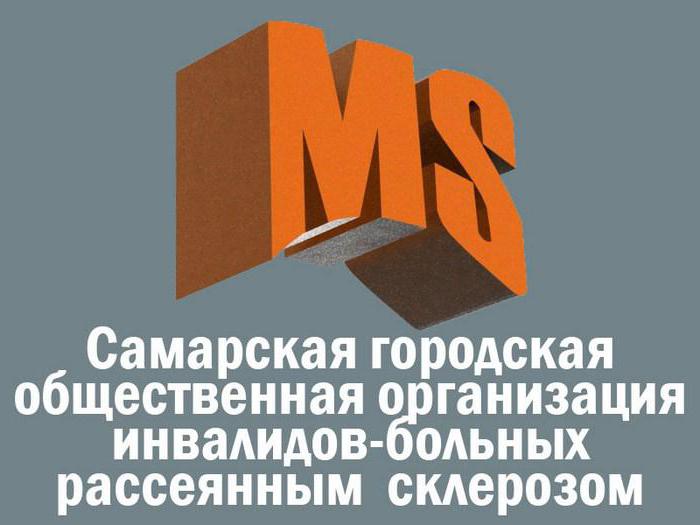The Law "On Public Organizations of the Russian Federation" regulates relations relating to the exercise by people of their rights to form social institutions, to carry out activities within their framework, and to reorganize / liquidate them. For foreign individuals and stateless persons the same legal possibilities are established, except for the cases provided for in regulatory enactments. 
Scope
The Law "On Public Organizations and Associations" applies to all social institutions formed by citizens. The exception is religious structures. Also, the normative act does not regulate the activities of commercial structures and the non-profit unions and associations formed by them.
Rights of citizens
Individuals have the legal ability to form social institutions (public associations) on a voluntary basis. The purpose of their education is the protection of collective interest and the implementation of common tasks. The right of people to unite also implies the possibility of joining existing institutions or refraining from this, as well as terminating their membership without any difficulties or obstacles. The formation of social institutions, thus, ensures the realization of interests and rights. The Law "On Non-Profit Public Organizations" allows their formation without the need to obtain prior permission for this from state structures, local authorities. Citizens may join such social institutions, subject to charters. The Law "On the Creation of Public Organizations" does not establish a mandatory requirement for registration. Such social institutions can operate without acquiring the rights of a legal entity. At the choice of citizens, a public organization may be registered in the manner prescribed by the law in question. 
Normative base
The rights of individuals to association, their contents, the status of organizations, the main guarantees of the state, the procedure for activities, education, liquidation / reorganization are regulated not only by the law under consideration, but also by the Civil Code, as well as a number of other regulatory acts. The specifics of the formation, functioning, structural transformations of certain types of social institutions can be regulated by specially adopted legal documents. Such organizations, for example, include trade unions, charitable foundations, etc. Normative acts adopted regarding them must comply with the legal document under consideration. These institutions may carry out their activities before the adoption of relevant laws. In this case, their functioning is regulated by the document in question.
The concept
The Law on Public Organizations discloses the definition of a social institution. It is a self-governing, voluntary formation formed on the initiative of citizens. The structure carries out its activities on a non-profit basis. Citizens form a social institution in accordance with the common interests and goals that are specified in the charter. 
Subjects
The Law "On Public Organizations" establishes that citizens and legal entities can act as founders of a social institution. These entities convene a congress at which they approve the charter, form the control and audit and governing apparatus. The founders of a social institution, both legal entities and citizens, perform equal duties and are vested with equal rights. Members of a public organization - public associations (legal entities) and individuals. Their interest is manifested in the collective solution of the tasks of the established institution on the basis of the provisions of its charter. It is drawn up by relevant documents (statements), allowing to take into account the number of members to ensure their equality as members of the organization. These entities are also endowed with equal legal opportunities and responsibilities. Members of a social institution can be elected and choose the composition of the oversight and audit and governing structures. They are also entitled to exercise control over the activities of governing bodies in accordance with the charter. In case of non-fulfillment of their duties, non-compliance with the requirements of the charter, members of a social institution may be expelled from it.
Members
As them, the Law "On Public Organizations" calls legal entities and citizens who express support for the goals of the formed institution, for specific actions held by it. Such entities participate in the activities of the structure without the need to draw up the conditions for their assistance, unless otherwise provided in the charter. Like founders and members, participants have equal responsibilities and rights. 
Kinds
The Law "On Public Organizations" allows the formation of:
- Motions.
- Funds.
- Organizations.
- Institutions.
- Amateur bodies.
- Political parties.
Social organization
It is based on membership. Such a structure is formed to carry out joint activities. The goals of education are to ensure the protection of interests and the implementation of the tasks provided for in the charter. Members may be legal entities and individuals, unless otherwise provided by the Federal Law "On Public Organizations" under consideration. The highest governing structure of a social institution is considered a conference (congress) or meeting. As a permanent management apparatus acts as a collegial body. It reports to the conference or general meeting. A social institution may go through state registration. In this case, the constantly operating management apparatus exercises the rights of a legal entity on behalf of the organization and fulfills its duties in accordance with the charter. 
Motion
As it is, the Law "On Public Organizations of the Russian Federation" recognizes an institution consisting of participants not on the basis of membership. This structure is distinguished by its mass character. A movement may pursue political, social, or other socially useful goals that are supported by its participants. The highest governing apparatus is a conference / congress or meeting. The standing body is the elected collegial structure. It reports to the meeting or congress. During state registration of movement, its governing body, acting constantly, performs duties and exercises rights on behalf of the institute on the basis of the provisions of the charter.
Territorial distribution
Currently, there are interregional, all-Russian, regional and local organizations. The former should be understood as an institution whose activities are carried out on the basis of statutory goals in a territory that covers less than half of all subjects of the country. In each district, however, they have their own branches, representative offices, and branches. An all-Russian organization is called an association that carries out its work in more than half of the country's constituent entities. They also have their units in the administrative-territorial units. Regional associations refer to organizations operating within the same entity. There are also local social institutions. They work within the territory controlled by the self-government body. For more specific regulation of these institutions, special regulatory documents may be adopted. For example, the law "On regional public organizations." 
Principles
This regulatory document provides that:
- Public organizations, regardless of their structural legal forms, are equal before the law.
- The work of social institutions is based on the principles of equality, voluntariness, self-government.
- Public organizations are free to determine their own internal structure, forms, goals, methods of functioning.
- The work of institutions should be distinguished by publicity. At the same time, information about the program and constituent documents should be publicly available.

Limitations
The legislation contains a number of prohibitions regarding the creation and subsequent activities of public organizations. In particular, the formation and functioning of social institutions, the goals or activities of which are characterized as extremist and aimed at inciting ethnic and other hatred, is not allowed. This ban was introduced on August 10, 2002. A public organization may include in the program and constituent documentation provisions relating to the protection of ideas about social justice. The formulation of such concepts cannot be considered as measures that contribute to inciting social discord. Restrictions on the formation of certain types of public associations (organizations) may be formulated and approved exclusively within the framework of federal legislation.








